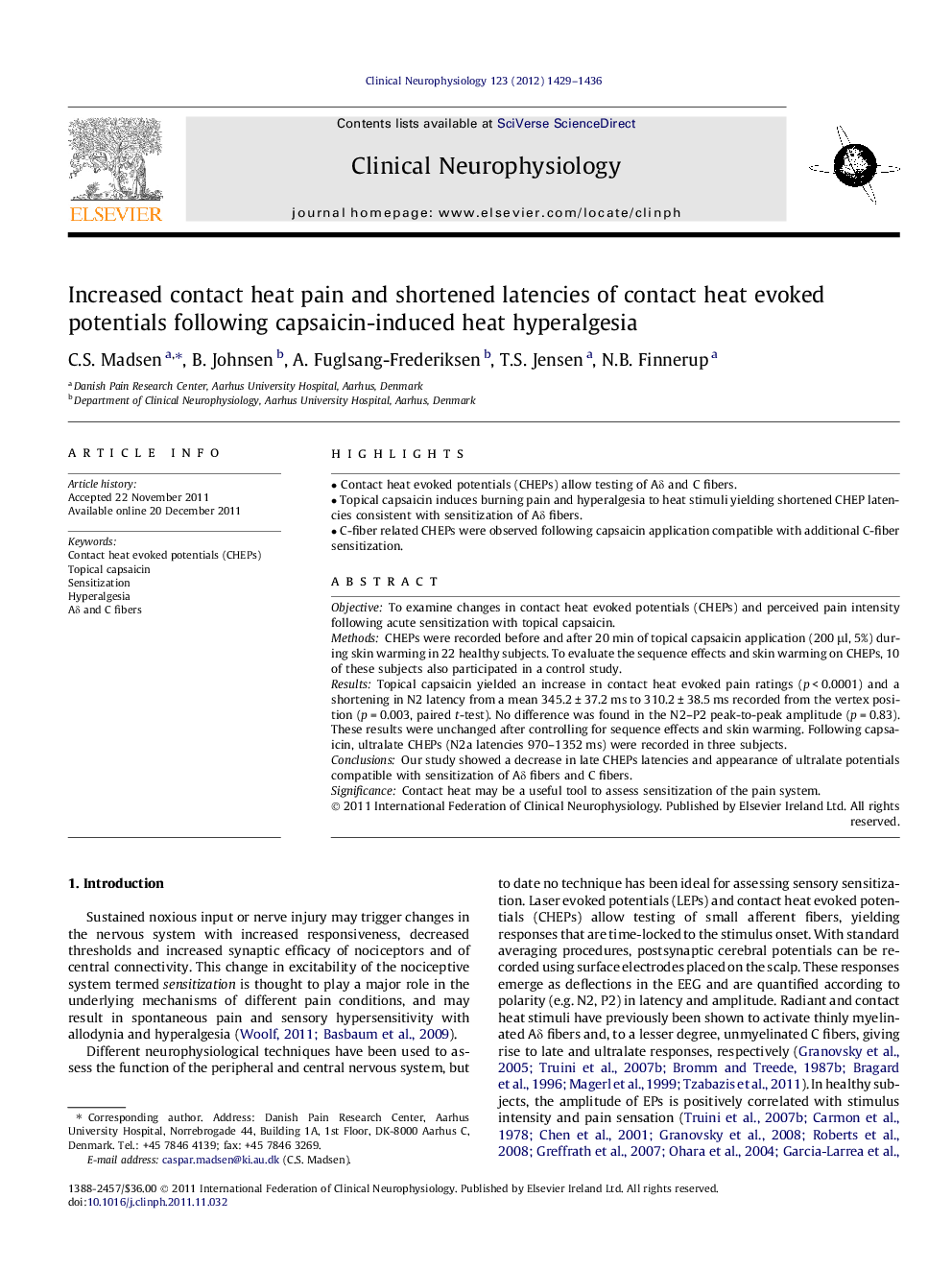| Article ID | Journal | Published Year | Pages | File Type |
|---|---|---|---|---|
| 3045507 | Clinical Neurophysiology | 2012 | 8 Pages |
ObjectiveTo examine changes in contact heat evoked potentials (CHEPs) and perceived pain intensity following acute sensitization with topical capsaicin.MethodsCHEPs were recorded before and after 20 min of topical capsaicin application (200 μl, 5%) during skin warming in 22 healthy subjects. To evaluate the sequence effects and skin warming on CHEPs, 10 of these subjects also participated in a control study.ResultsTopical capsaicin yielded an increase in contact heat evoked pain ratings (p < 0.0001) and a shortening in N2 latency from a mean 345.2 ± 37.2 ms to 310.2 ± 38.5 ms recorded from the vertex position (p = 0.003, paired t-test). No difference was found in the N2–P2 peak-to-peak amplitude (p = 0.83). These results were unchanged after controlling for sequence effects and skin warming. Following capsaicin, ultralate CHEPs (N2a latencies 970–1352 ms) were recorded in three subjects.ConclusionsOur study showed a decrease in late CHEPs latencies and appearance of ultralate potentials compatible with sensitization of Aδ fibers and C fibers.SignificanceContact heat may be a useful tool to assess sensitization of the pain system.
► Contact heat evoked potentials (CHEPs) allow testing of Aδ and C fibers. ► Topical capsaicin induces burning pain and hyperalgesia to heat stimuli yielding shortened CHEP latencies consistent with sensitization of Aδ fibers. ► C-fiber related CHEPs were observed following capsaicin application compatible with additional C-fiber sensitization.
